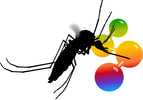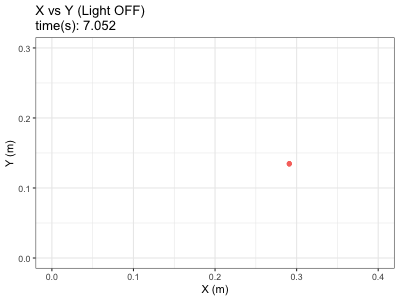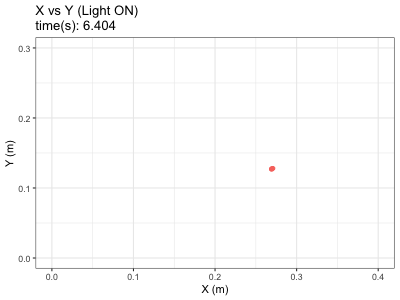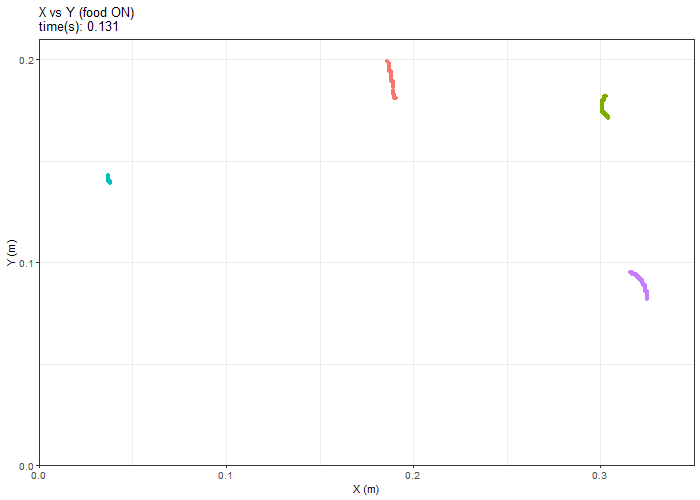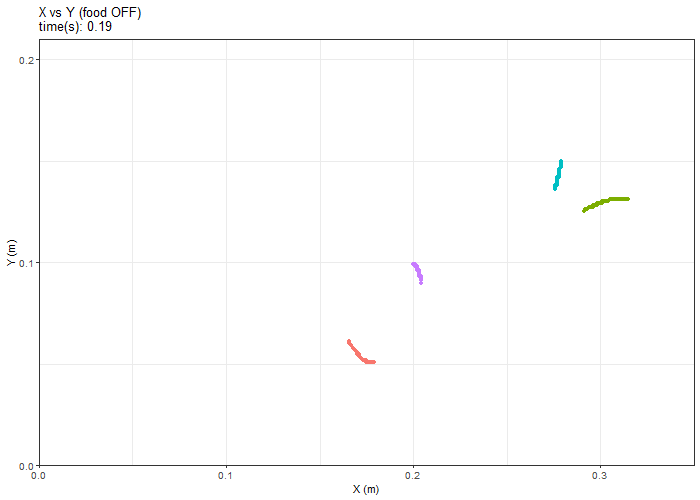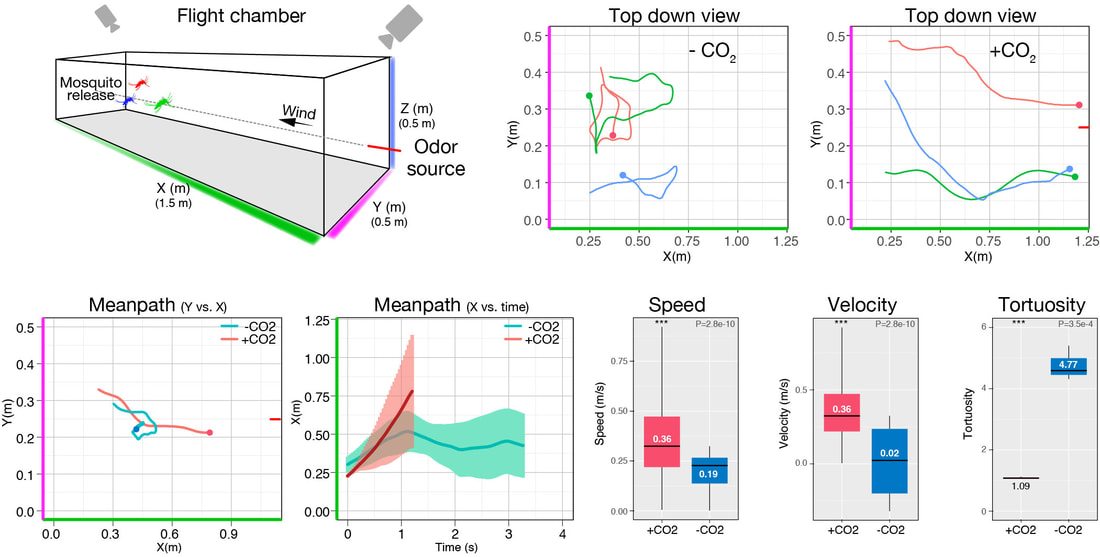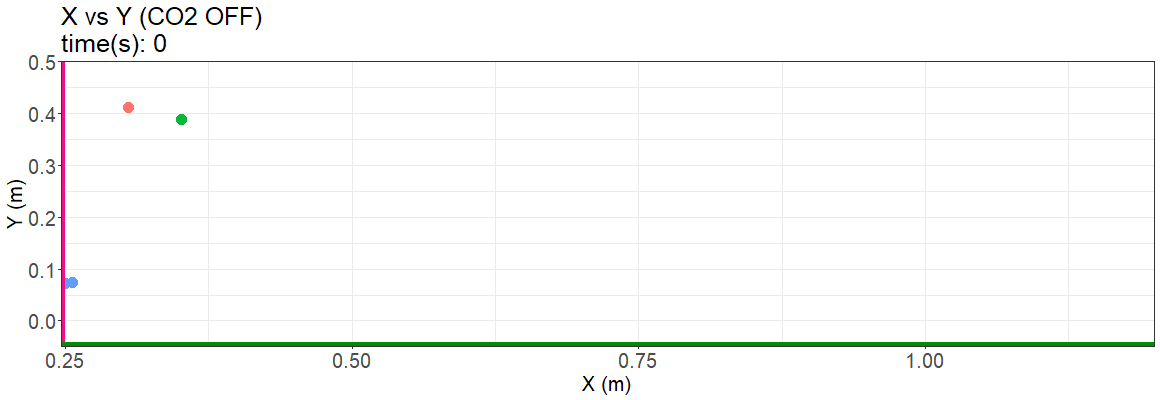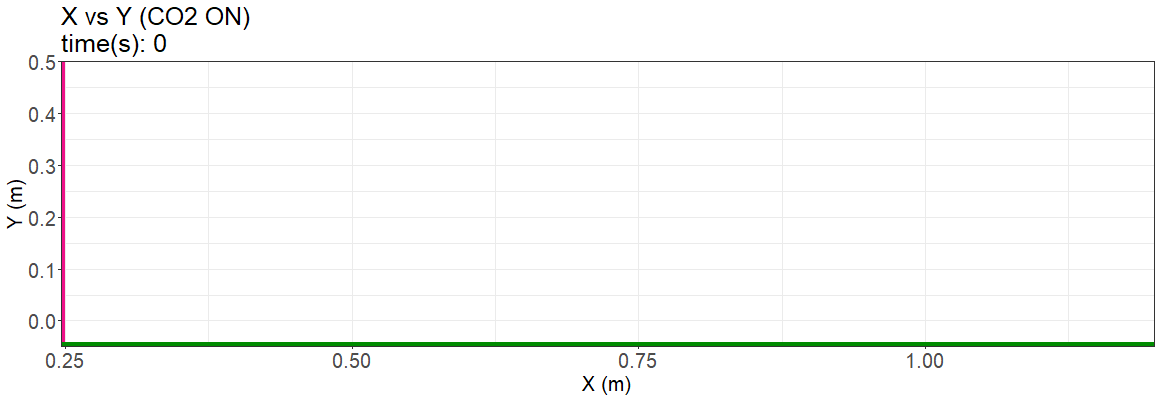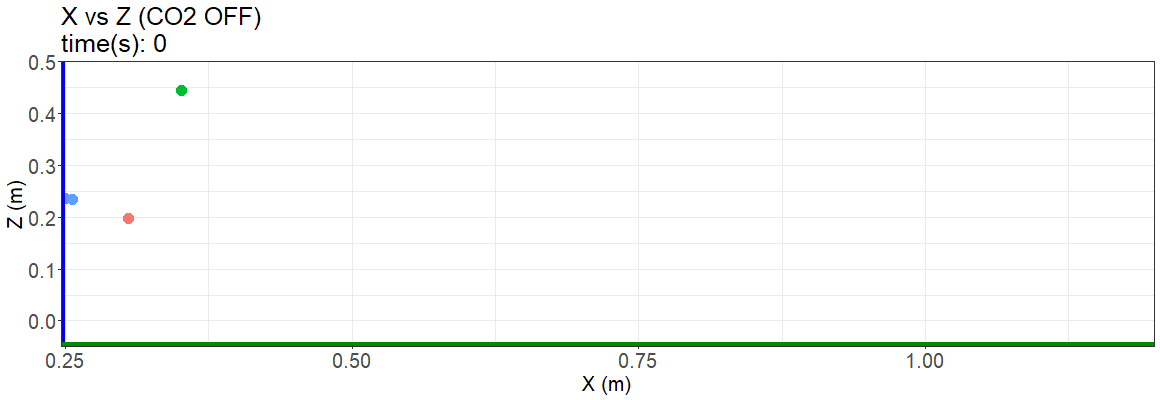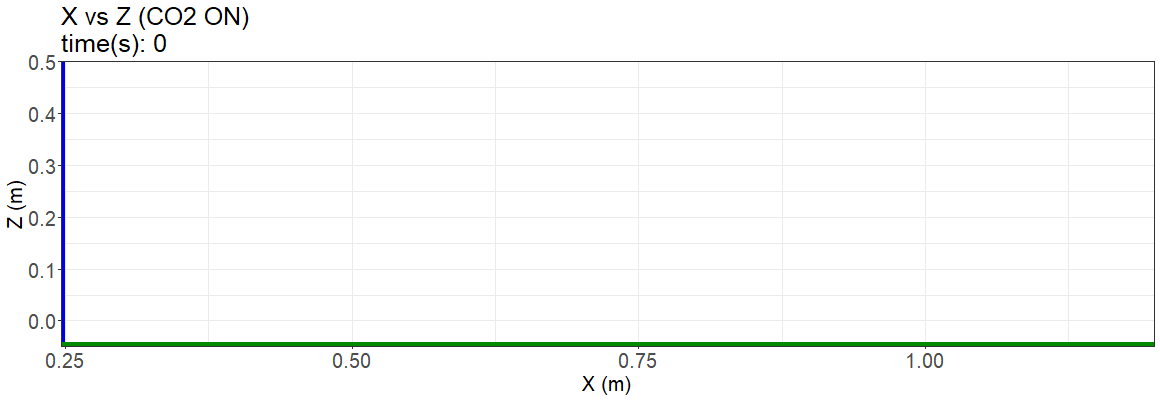3D-tracking of mosquitoes
Mosquito larvae and adults can be tracked in realtime using infrared-sensitive cameras, processed through the TrackIt software (SciTrackS) and analyzed using a combination of custom scripts written in MATLAB and R. These cameras are identifying and tracking moving objects, providing x,y,z coordinates every 100 ms. This technology allows us to study mosquito behavior in response to a variety of stimuli, including visual (example below), olfactory or mechanical.
The light escape response of mosquito larvae
Mosquito larvae exhibit an escape response to sudden change in light intensity. This escape response can be clearly visualized below. These are the recorded trajectories of 4 mosquito larvae in the dark (light OFF) and 4 separate larvae exposed to light (light ON). This work is carried out by Evyatar Sar-Shalom.
The same trajectories in motion (bird's eye view)
These trajectories may be analyzed to highlights significant behavioral differences such as velocity. The analysis below highlights the difference in velocity between light-treated and darkness-treated larvae. Once escaping larvae reach the side wall of the behavioral arena, their velocity decreases.
Mosquito larva chemokinesis
Although mosquito larvae are aquatic, they have antennae equipped with odorant receptors, indicating they are using underwater olfaction to identify food and danger sources. In the experiment below, larvae are exposed to an attractant and a control samples on the opposite side of the larval chamber. Both test and control samples are delivered every minute during 10 minutes. Larvae are exhibiting a combination of seemingly erratic and circular motion patterns (highlighted in yellow), which ultimately lead to the attractant side of the chamber. This work was carried out by Evyatar Sar-Shalom and David Ruel.
The same trajectories in motion
Adult mosquito odorant-mediated flight
We have developed a behavioral assay based on real-time 3D tracking, which allows us to test olfactory mediated behaviors of mosquitoes in response to odors. As an example, below are recorded trajectories (bird's eye view, X vs. Y) of 3 adult mosquitoes in the dark exposed to air with CO2 or to air without CO2. Mosquito motivational flight can be quantitatively measured and quantified with parameters, including speed, velocity and tortuosity.
This work is carried out by Evyatar Sar-Shalom.
This work is carried out by Evyatar Sar-Shalom.
The same trajectories in motion
